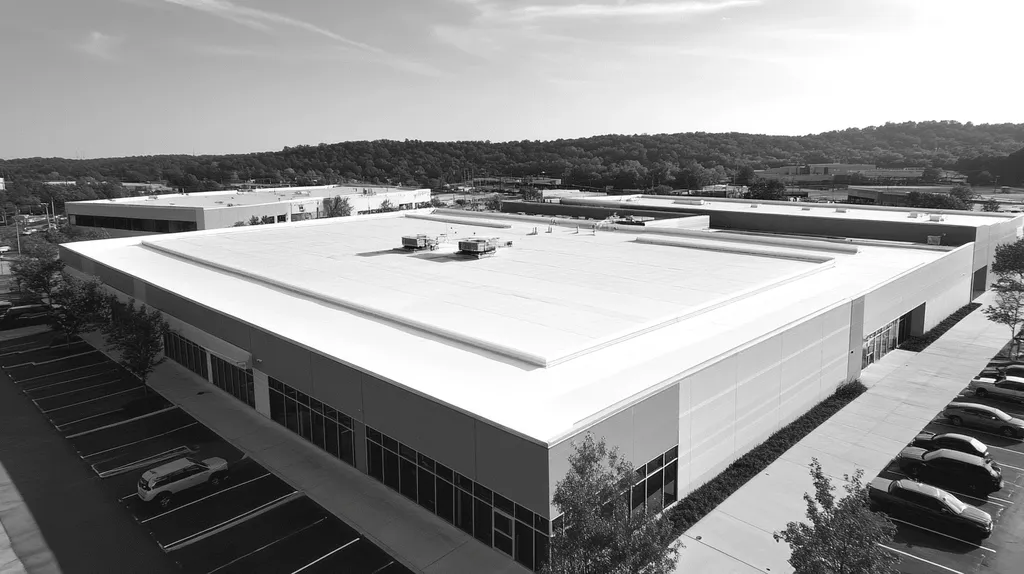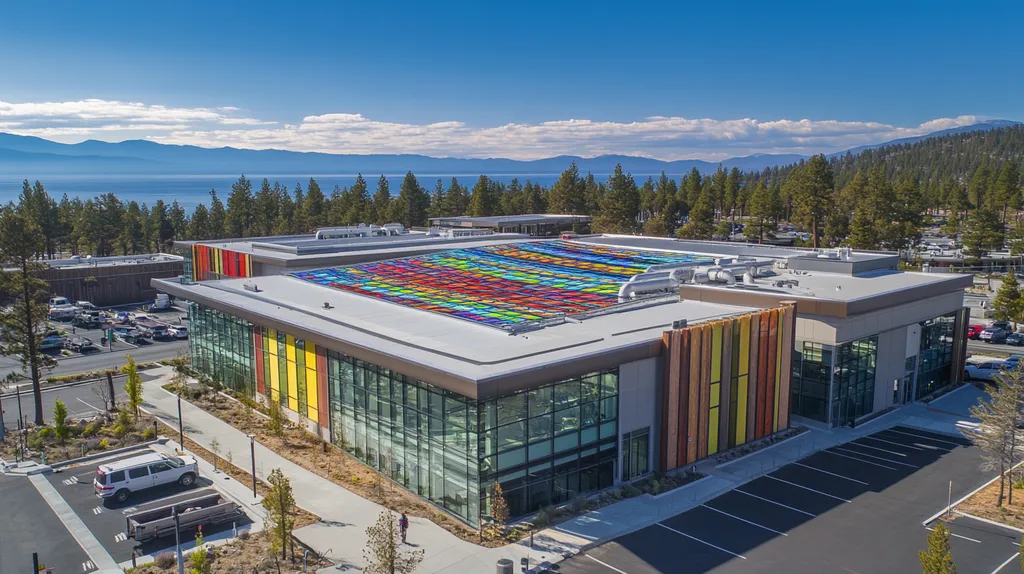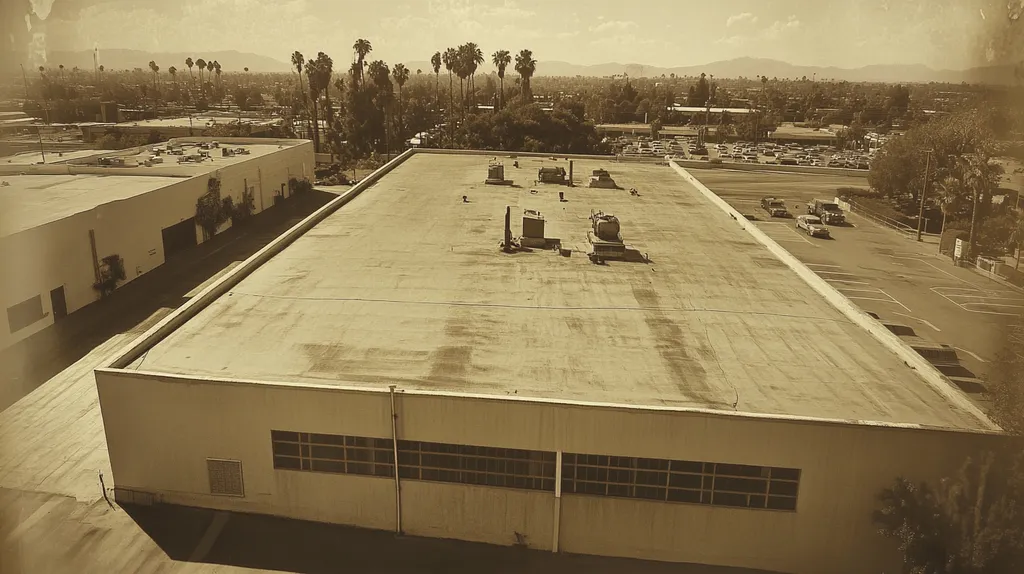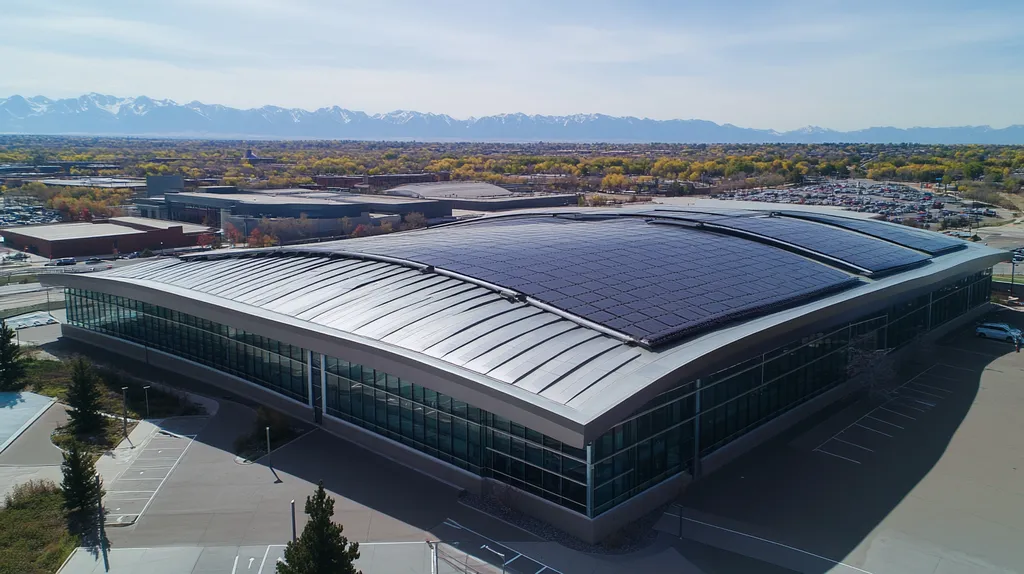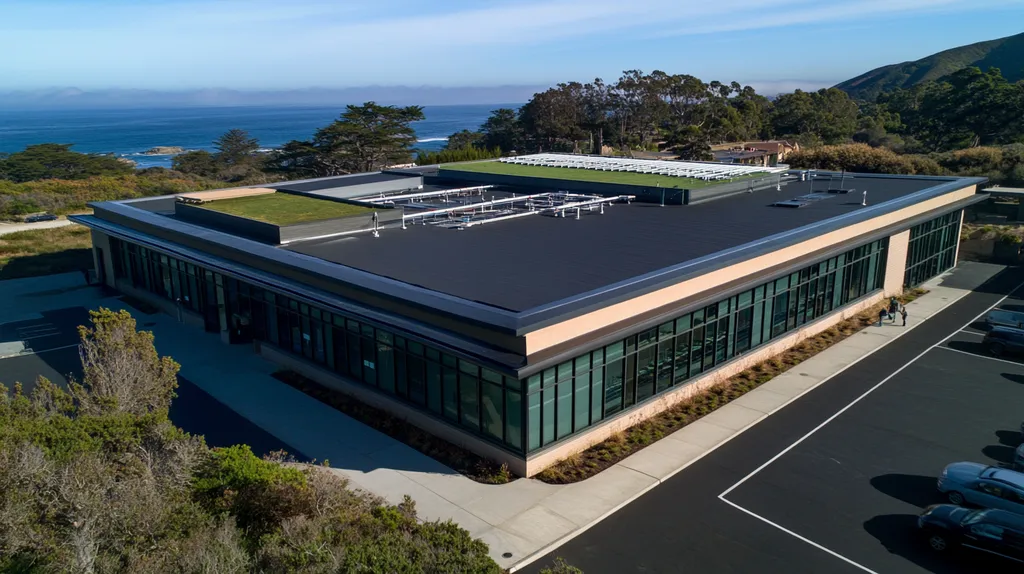Commercial property owners lose millions annually due to misconceptions about roofing energy performance, with studies showing up to 40% of building energy loss occurs through poorly designed or maintained roofs.
Despite advances in roofing technology, persistent myths continue to drive decisions that compromise building efficiency and increase operational costs.
From the false belief that cool roofs only benefit hot climates to misconceptions about energy-efficient materials’ costs, these misunderstandings prevent owners from achieving optimal building performance and realizing substantial utility savings.
This comprehensive analysis examines common roofing myths, their practical implications, and evidence-based solutions that enhance energy efficiency while protecting long-term property value.
SECTION 1: COMMON MISCONCEPTIONS
Misunderstandings about commercial roofing can lead to increased energy costs and missed opportunities for savings. Property owners often dismiss innovative roofing solutions due to persistent myths. For instance, the misconception that cool roofs are only useful in hot climates can prevent energy efficiency improvements in a variety of environments. Recognizing and addressing these myths is crucial for making informed roofing decisions that boost a building’s energy performance.
Cool Roofs Are Only for Hot Climates
Many property owners mistakenly believe that cool roofs are advantageous solely in hot areas, overlooking their benefits across different climates. Cool roofs are designed to reflect sunlight and absorb less heat, making them effective even in cooler regions. For example, in temperate zones, a cool roof can limit heat absorption, resulting in lower energy consumption for cooling during warmer times.
In fact, research indicates that cool roofs can yield year-round energy savings, regardless of local weather conditions. Buildings in moderate climates have reported significant reductions in cooling costs, showcasing the advantages of this roofing type across the board.
This misconception often leads to lost opportunities, as energy savings can substantially offset the initial cost of a cool roof. By ignoring the potential benefits, property owners may inadvertently contribute to unnecessary energy consumption and higher costs.
Ultimately, expanding the understanding of cool roofs reveals their adaptability beyond just hot environments. Property owners should re-evaluate their roofing choices with an emphasis on improving energy performance.
Energy-Efficient Roofing is Too Expensive
A widespread belief among property owners is that energy-efficient roofing systems come with exorbitant upfront costs. While initial investments may be higher, the long-term savings on energy bills can far outweigh these expenditures. Energy-efficient roofs often lead to reduced utility bills and lower maintenance costs over time.
Many utility companies also provide incentives for upgrading to energy-efficient options, easing the financial burden. These incentives can significantly lessen initial costs, making modern roofing solutions more accessible for commercial property owners.
Furthermore, the durability and efficiency of energy-efficient roofing materials often translate to longer lifespans. This longevity reduces the need for frequent replacements, adding to overall savings and justifying the initial investment.
Understanding the true cost-benefit analysis of energy-efficient roofing is essential for property owners. The misconception of high costs can prevent owners from pursuing valuable investments that positively impact both the environment and profitability.
All Energy-Efficient Roofs Look the Same
Another common misbelief is that all energy-efficient roofs have a generic appearance, which can deter property owners from considering them. In reality, contemporary energy-efficient roofing systems are available in a wide array of styles, materials, and colors. This variety allows owners to preserve aesthetic preferences while still prioritizing performance.
For instance, energy-efficient roofing can be customized to match existing architectural features, ensuring that visual appeal is maintained. Property owners can select from options like reflective membranes, green roofs, and high-performing shingles that enhance the building’s look.
This myth can lead to missed chances, as the diverse options cater to various design needs and brand identities. Recognizing that beauty and efficiency can coexist encourages property owners to explore energy-saving roofing solutions.
It is crucial to encourage property owners to educate themselves and visualize the full range of available products. The distinct styles and capabilities of energy-efficient roofs can add value to buildings without compromising their aesthetic appeal.
SECTION 2: PRACTICAL IMPLICATIONS
The energy performance of commercial roofs has immediate and far-reaching effects on operational costs, maintenance needs, and the aesthetics of a building. When a roof underperforms, it can lead to unnecessary energy waste, driving utility bills higher and straining budgets considerably. Research shows that a properly insulated roof can offer savings of up to 30% on energy costs, underscoring the importance of addressing roofing mistakes. In this section, we will delve into how common roofing oversights influence energy consumption, roof longevity, and a structure’s overall visual appeal.
Impact on Energy Consumption and Costs
Energy consumption stands as a primary concern in the realm of commercial roofing. Many property owners fail to recognize the critical roles that insulation and reflective materials play, which can trigger excessive heating and cooling demands.
For instance, a roof lacking adequate insulation may cause energy costs to soar by as much as 40%. This not only impacts the financial bottom line but also compromises the overall performance of the building.
Additionally, conventional roofing materials often retain heat instead of reflecting it. By adopting energy-efficient solutions like cool roofs, building owners can greatly minimize their reliance on HVAC systems, resulting in substantial cost savings.
Ultimately, prioritizing the right roofing materials and insulation is key to achieving lower energy expenses over time. An informed approach to these decisions enhances long-term profitability and building sustainability.
Effects on Roof Durability and Maintenance
The choices made during the roofing process can have a profound effect on the roof’s durability and maintenance requirements. Using substandard materials or employing improper installation techniques can accelerate wear and lead to premature roof failure.
For example, roofs that lack proper ventilation experience rapid aging due to moisture accumulation. This buildup can foster mold growth and structural damage, necessitating expensive repairs or even early roof replacement.
Moreover, when energy performance suffers, routine maintenance becomes increasingly burdensome. Frequent repairs resulting from poor initial decisions can strain facility managers’ resources and disrupt daily operations.
Investing in quality roofing solutions from the onset can significantly enhance the roof’s lifespan and robustness, ultimately minimizing maintenance frequency and costs. Making durability a priority is essential for maintaining overall financial health.
Influence on Building Aesthetics and Design
The energy performance of a roof also plays a crucial role in a building’s aesthetics and design. Many owners mistakenly view functionality as a separate consideration from visual appeal; however, contemporary roofing materials seamlessly integrate both advantages.
For instance, reflective roofing options are available in a wide variety of colors and finishes, elevating a building’s exterior while simultaneously boosting energy efficiency. This aesthetic enhancement can attract tenants or customers, elevating occupancy rates and overall property value.
Conversely, roofs that neglect design can significantly detract from a building’s image. Worn-out materials often display unsightly damage, which can adversely affect public perception and, ultimately, business success.
In summary, the successful integration of energy-efficient roofing solutions that also consider visual appeal is vital for maximizing a property’s potential. Owners should aim for a roofing strategy that equally values form and function.
SECTION 3: COST OF MISINFORMATION
Misinformation in the world of commercial roofing can lead to costly decisions that significantly decrease energy performance and hinder operational efficiency. For example, choosing the wrong roofing material can escalate energy consumption, resulting in sharply rising utility bills. Property owners who rely on inaccurate information may unknowingly trade potential long-term savings for immediate, short-term gains, facing unexpected financial challenges as a consequence. This section examines the severe financial implications of poor roofing decisions and how they affect energy performance.
Financial Consequences of Incorrect Choices
When property owners prioritize low initial costs over quality in roofing materials, they often overlook the long-term effects. For example, an inexpensive roof might lack proper insulation, leading to soaring heating and cooling costs. Moreover, less durable materials typically have a shorter lifespan, which means they require more frequent replacements.
It’s estimated that commercial properties can lose as much as 30% of their energy through the roof, translating into thousands of wasted dollars on energy bills each year. Such losses can easily outstrip any initial savings gained from choosing cheaper roofing options, leading to a poor return on investment.
Furthermore, relying on incorrect information can result in choosing roofs that fail to meet local building codes or energy standards. This oversight can lead to additional financial penalties, compounding the costs linked with inadequate roofing decisions.
Ultimately, property owners must recognize that the true costs of poor roofing choices extend well beyond the initial purchase price, encompassing ongoing operational costs that can adversely affect their bottom line.
Long-Term Energy Savings vs. Initial Costs
Investing in high-quality roofing systems often requires a larger upfront payment, but the long-term energy savings can be significant. Quality materials tend to have superior insulation properties, effectively reducing energy consumption over time. This efficiency translates to lower utility bills, which can offset the initial investment.
For instance, consider a building equipped with a reflective roof designed to repel solar heat. While this option may carry a higher upfront price compared to traditional materials, the savings on cooling costs can recuperate the initial expense within just a few years. Projections indicate that energy-efficient roofs can provide savings of up to 25% on energy bills.
It’s crucial for property owners to understand the balance between upfront costs and potential long-term benefits. Making informed roofing decisions often leads to a more sustainable approach that aligns with overall financial wellness and energy conservation.
In summary, prioritizing future savings over initial expenditures facilitates stronger decision-making in commercial roofing investments.
Potential for Increased Maintenance Costs
Misguided choices regarding roofing materials can significantly elevate maintenance costs over time. Property owners who opt for inferior products often find themselves contending with more frequent repairs and replacements. This not only strains budgets but also diverts valuable resources away from other essential maintenance tasks.
For example, a roof that deteriorates quickly may allow water intrusion, resulting in damage to the building’s interior and leading to costly repairs. Furthermore, increased maintenance often comes with higher labor costs, negatively impacting overall profitability.
Additionally, the need for constant inspections and repairs can put pressure on facility management teams. As staff are drawn away to address these persistent issues, other critical responsibilities may suffer, hindering operational efficiency.
In the end, failing to grasp the long-term maintenance implications of roofing decisions can create a cycle of rising costs, ultimately leading to unforeseen financial strain for property owners.
SECTION 4: REALITY CHECK
Energy performance in commercial roofing is not just an option but a necessity for building owners. Poorly chosen roofing can lead to soaring energy costs, potential structural damage, and adverse environmental effects. For instance, using inappropriate materials in sunny regions can inflate cooling expenses by as much as 25%. This section delves into the realities of cool roofs, the durability of energy-efficient materials, and the critical need for proper installation and maintenance to enhance energy performance.
Benefits of Cool Roofs in Various Climates
Cool roofs deliver impressive benefits, regardless of the climate zone. They reflect sunlight and minimize heat absorption, lowering indoor temperatures and reducing the burden on air conditioning systems. In hot, sunny regions, these roofs can shrink energy consumption by 15-20%.
However, the advantages extend beyond warm climates. Even temperate areas benefit from cool roofs, as they help maintain consistent indoor temperatures throughout the year, enhancing energy efficiency across all seasons.
In fact, cooler roofs are useful in colder regions too. They reduce the accumulation of snow and ice, decreasing potential structural risks and improving overall roof lifespan. The initial cost of cool roofs pays off with considerable long-term savings in energy expenses and maintenance needs.
Recognizing these benefits empowers property owners to transition away from outdated practices. By incorporating cool roofing technologies, they can significantly improve energy performance and sustainability.
Durability of Energy-Efficient Roofing Materials
When it comes to longevity, energy-efficient roofing materials often outperform traditional options. Materials such as reflective membranes and insulated panels are designed to endure harsh weather conditions, reducing the frequency of repairs and replacements.
Take TPO (thermoplastic polyolefin) membranes, for example. Known for their robustness and reflectivity, these membranes resist UV damage and maintain their integrity over time. This resilience helps sustain an efficient internal climate and keeps energy costs down.
Additionally, energy-efficient roofs often carry extensive warranties, sometimes lasting up to 30 years. These guarantees signal manufacturers’ confidence in their products and reduce the likelihood of unexpected costs due to mid-life failures.
Investing in durable, energy-efficient materials leads to significant financial benefits. By prolonging roof life, property owners can reallocate funds toward other critical building enhancements, ultimately improving financial outcomes.
Importance of Proper Installation and Maintenance
No matter how advanced the materials, poor installation can undermine their advantages. It’s crucial that installation is performed by skilled professionals adhering to manufacturer guidelines. Flawed installation can result in leaks, insulation gaps, and energy inefficiencies.
Regular maintenance is equally important. Scheduled inspections detect potential problems before they escalate, such as cracks and punctures. Proactive upkeep not only extends the roof’s life but also ensures consistent energy performance.
Ineffective maintenance can lead to higher repair costs and energy waste. Small neglect can cause buildings to lose heat in winter or cool air during summer, increasing utility bills and compromising occupant comfort.
Ultimately, the combination of proper installation and routine maintenance is foundational for maximizing energy performance. By committing to these practices, property owners can ensure their investments deliver the energy efficiency outcomes they expect.
SECTION 5: EVIDENCE-BASED ALTERNATIVES
With energy prices steadily climbing, the efficiency of commercial roofing systems has become more crucial than ever. Property owners must recognize that inadequate material choices, poor roof designs, and overlooked financial incentives can significantly undermine energy performance. Embracing evidence-based alternatives can enhance energy efficiency and lead to substantial cost savings while promoting healthier indoor environments. This section discusses effective strategies for selecting roofing materials, optimizing roof designs, and leveraging available tax incentives.
Selecting the Right Energy-Efficient Materials
The choice of materials is essential to achieving optimal energy performance in commercial roofs. For instance, reflective membranes and green roofs can substantially lower heat absorption, resulting in diminished cooling costs and energy consumption.
Highly reflective white roofing membranes can cut roof surface temperatures by as much as 30%. This reduction not only lightens cooling demand but also extends the lifespan of the roofing system itself.
Furthermore, insulation types must also be taken into consideration. High R-value insulation materials boost thermal resistance, effectively curtailing energy loss. By prioritizing energy-efficient materials, property owners can realize significant long-term cost savings.
In short, selecting appropriate materials should align with both immediate needs and long-term energy efficiency goals. Conducting thorough research and consulting with roofing professionals can steer property owners toward the best choices.
Designing Roofs for Optimal Energy Performance
The design of a roof plays a pivotal role in a building’s overall energy efficiency. Smart design elements, such as proper slope and drainage, help minimize water pooling, which can lead to unnecessary heat gain and temperature instability.
Incorporating features such as rooftop gardens or solar panels not only boosts energy efficiency but also adds visual appeal. These solutions enhance insulation while generating renewable energy, reducing reliance on conventional energy sources.
Collaborating with architects and engineers during the planning phase ensures that energy-efficient principles are integrated from the start. This proactive strategy sets the stage for systems specifically designed to maximize energy performance.
Ultimately, effective roof design not only leads to substantial energy savings but also enhances roof longevity and strengthens climate resilience in commercial properties.
Utilizing Tax Credits and Rebates
Many property owners neglect available tax incentives and rebates that can help mitigate roofing costs. Numerous programs at federal, state, and local levels exist to encourage energy-efficient upgrades. Taking advantage of these resources can significantly lower initial investment expenses.
For example, the Energy Policy Act of 2005 provides tax deductions for energy-efficient property improvements. Property owners can claim deductions for roofing systems meeting specific energy criteria, reaping considerable financial rewards.
Additionally, many utility companies offer rebates for installing energy-efficient roofing systems. Engaging with these programs can make the transition to energy-efficient solutions more financially feasible.
Understanding and utilizing these financial incentives is crucial for property owners striving to enhance energy performance while effectively managing their budgets.
SECTION 6: TEST AND VERIFY
Ensuring optimal energy performance in commercial roofs requires regular testing and verification. Studies show that poorly maintained roofs can lead to energy losses of up to 30%. Implementing routine assessments, including inspections, energy monitoring, and contractor evaluations, is key to maintaining energy efficiency and capitalizing on potential savings. These proactive steps equip property owners to make informed decisions regarding roof maintenance and upgrades.
Conducting Regular Roof Inspections
Conducting regular roof inspections is essential for preserving energy efficiency. Many commercial roofs conceal issues like leaks and insulation breakdowns that aren’t always visible. If not addressed, these issues can lead to significantly higher heating and cooling expenses.
Inspections should occur at least twice a year and after severe weather events to catch early signs of damage. By identifying problems quickly, property owners can prevent more extensive and costly repairs later on.
It’s advisable to hire certified roofing professionals for thorough evaluations. Their expertise helps uncover issues that an untrained eye might miss and leads to actionable solutions that enhance energy performance.
Incorporating technologies like infrared thermography can be particularly beneficial. This advanced method helps pinpoint thermal inefficiencies, making it easier to implement targeted repairs and substantially improve a roof’s energy efficiency.
Monitoring Energy Consumption and Savings
Monitoring energy consumption is crucial for assessing a commercial roof’s effectiveness. Property owners should track energy usage patterns, as a sudden spike in costs can indicate underlying roof problems that require immediate action.
Implementing energy management systems can streamline data collection, allowing property managers to connect roofing conditions with energy expenses. By having accurate information, informed decisions about maintenance or replacement become more straightforward.
Additionally, evaluating the return on investment for energy-efficient improvements enables property owners to maximize their roofing budgets. Understanding how potential savings correlate with initial expenditures assists in prioritizing projects that offer the best financial returns.
Conducting regular energy audits can further identify inefficiencies, turning roof maintenance from a mere obligation into a strategic advantage that promotes savings.
Evaluating Contractor Credentials and Experience
Selecting the right contractor is vital for optimizing energy performance. Many property owners make the mistake of choosing the lowest bid without considering qualifications, which can result in subpar installations that undermine potential energy savings.
Verifying contractor credentials—such as licenses, insurance, and industry certifications—is essential. A competent contractor ensures proper installation and is knowledgeable about contemporary energy-efficient materials and technologies.
Experience is also crucial; contractors with proven success are more likely to follow best practices. Property owners should seek references and examples of previous work to assess a contractor’s expertise in energy-efficient roofing.
Moreover, ongoing education is important in the roofing industry. Contractors who stay informed about the latest energy-saving technologies can provide innovative solutions tailored to specific building needs, thus maximizing a roof’s energy performance.
The Bottom Line
Commercial property owners lose an estimated $5 billion annually due to roofing-related energy inefficiencies that could be prevented with proper information and implementation.
The persistent myths surrounding energy-efficient roofing continue to drive decisions that compromise building performance and increase operational costs by 20-40% above optimal levels.
By embracing evidence-based approaches to roofing materials, design, and maintenance, property owners can achieve energy savings of up to 30% while extending roof lifespans by 5-10 years.
Regular testing, monitoring, and verification remain critical tools for maintaining these efficiency gains, with proper implementation yielding ROI exceeding 25% over traditional roofing systems.
The time for addressing these issues is now, as energy costs continue to rise and building efficiency standards become increasingly stringent.
FREQUENTLY ASKED QUESTIONS
Q. Is a commercial roof only useful in hot climates?
A. No, cool roofs benefit all climates. They reflect sunlight and reduce heat absorption, which helps lower energy costs for cooling in both hot and temperate regions. Even in colder climates, they help maintain stable indoor temperatures year-round and can reduce snow accumulation.
Q. How do poor roofing choices impact energy costs?
A. Selecting subpar materials can significantly inflate energy expenses due to inadequate insulation and heat retention. Without proper energy-efficient solutions, businesses may face utility bills that are considerably higher, affecting operational budgets.
Q. Can energy-efficient roofs look good?
A. Yes, modern energy-efficient roofing options come in various styles, colors, and materials. This allows property owners to maintain aesthetic preferences while enjoying the benefits of energy savings, proving that beauty and efficiency can coexist.
Q. How do poor roofing choices affect maintenance needs?
A. Using low-quality materials and improper installation can lead to frequent repairs and increased maintenance costs. A roof that deteriorates quickly can cause additional expenses due to water damage, mold growth, and the need for early replacements.
Q. What are financial incentives for upgrading roofing materials?
A. Many federal, state, and local programs offer tax credits, deductions, and rebates for energy-efficient roof upgrades. These incentives can significantly reduce initial costs, making the transition to better roofing solutions more affordable for property owners.
Q. How often should commercial roofs be inspected?
A. Commercial roofs should be inspected at least twice a year and after severe weather events. Regular inspections help identify issues like leaks and insulation breakdowns before they escalate, ensuring energy efficiency and preventing costly repairs.
Q. How can I verify a contractor’s credentials for roofing work?
A. Check for licenses, insurance, and industry certifications when hiring a contractor. Additionally, seek references and examples of prior work to assess experience with energy-efficient roofing, ensuring quality installation and adherence to best practices.


